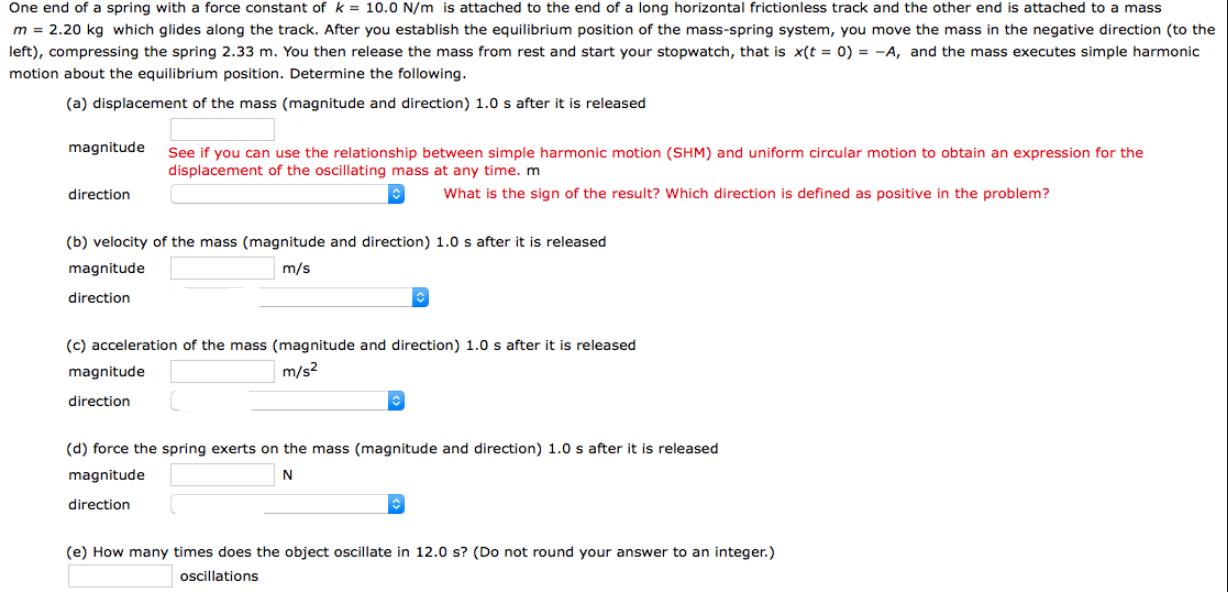Answered step by step
Verified Expert Solution
Question
1 Approved Answer
One end of a spring with a force constant of k= 10.0 N/m is attached to the end of a long horizontal frictionless track

One end of a spring with a force constant of k= 10.0 N/m is attached to the end of a long horizontal frictionless track and the other end is attached to a mass m = 2.20 kg which glides along the track. After you establish the equilibrium position of the mass-spring system, you move the mass in the negative direction (to the left), compressing the spring 2.33 m. You then release the mass from rest and start your stopwatch, that is x(t = 0) = -A, and the mass executes simple harmonic motion about the equilibrium position. Determine the following. (a) displacement of the mass (magnitude and direction) 1.0 s after it is released magnitude See if you can use the relationship between simple harmonic motion (SHM) and uniform circular motion to obtain an expression for the displacement of the oscillating mass at any time. m What is the sign of the result? Which direction is defined as positive in the problem? direction (b) velocity of the mass (magnitude and direction) 1.0 s after it is released magnitude m/s direction (c) acceleration of the mass (magnitude and direction) 1.0 s after it is released m/s2 magnitude direction (d) force the spring exerts on the mass (magnitude and direction) 1.0 s after it is released magnitude N direction (e) How many times does the object oscillate in 12.0 s? (Do not round your answer to an integer.) oscillations
Step by Step Solution
There are 3 Steps involved in it
Step: 1
Given that mass m220 kg AmplitudeA233 m spring constantk 10 Nm Timet1 we kn...
Get Instant Access to Expert-Tailored Solutions
See step-by-step solutions with expert insights and AI powered tools for academic success
Step: 2

Step: 3

Ace Your Homework with AI
Get the answers you need in no time with our AI-driven, step-by-step assistance
Get Started


